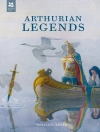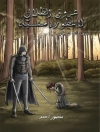In ‘The Queen of the Air: Being a Study of the Greek Myths of Cloud and Storm, ‘ John Ruskin offers a compelling exploration of the intersections between mythology, nature, and art. Through a meticulous analysis of Greek myths related to the elemental forces of air and storm, Ruskin delineates the profound connections between the natural world and human perception. His poetic yet analytical prose reflects the Victorian literary tendency to celebrate nature while grappling with its sublime aspects, positioning the work within the broader context of Romanticism. The text serves as a critical examination of the underlying philosophies that inform artistic representation and human emotion, demonstrating Ruskin’s belief in the moral significance of beauty within nature. John Ruskin, a prominent art critic, social thinker, and philanthropist, was profoundly influenced by his passion for nature and the visual arts. His extensive background in art history and profound admiration for Gothic architecture informed his views on beauty and its moral implications. Ruskin’s critiques of industrialization and its dehumanizing effects are evident in this work, making it a reflection of his ongoing dialogue with the shifting paradigms of his time. For readers interested in the interplay between mythology, nature, and art, ‘The Queen of the Air’ is an enriching text that challenges conventional notions of beauty and invites a deeper understanding of the elemental forces shaping our world. Ruskin’s meticulous scholarship and lyrical style will captivate not only mythology enthusiasts but also anyone seeking a deeper connection with the natural environment.
Tentang Penulis
John Ruskin (1819–1900) stands out as one of the most versatile and influential writers of the 19th century, renowned for his wide-ranging contributions in art, architecture, literature, and social criticism. Ruskin’s impassioned writing style and his rich expression give profound insights into the human condition and the aesthetics of art and nature. His masterly prose is characterized by clarity, descriptive power, and moral fervor, as seen in works like ‘Modern Painters’ and ‘The Stones of Venice, ‘ texts that elevated art criticism to philosophical discourse. In ‘The Queen of the Air: Being a Study of the Greek Myths of Cloud and Storm’ (1869), Ruskin intertwines mythology, natural history, and his reflections on Greek deities to explore elemental forces and articulate his beliefs about spirituality in the manifested world. Ruskin’s literary craftsmanship, blending poetic sensibility with analytic precision, rendered him a formidable public intellectual of his era. His influence extended beyond art and literature, as he ventured into social commentary, advocating for a profound rethinking of capitalism and industrialization, notably through his notable and influential essays compiled later as ‘Unto This Last.’ Ruskin’s advocacy for the Gothic Revival in architecture documented in his writings, contributed significantly to the Arts and Crafts movement, emphasizing the unity of art, life, and nature — a synthesis matched by few in the breadth of discourse and depth of conviction.












